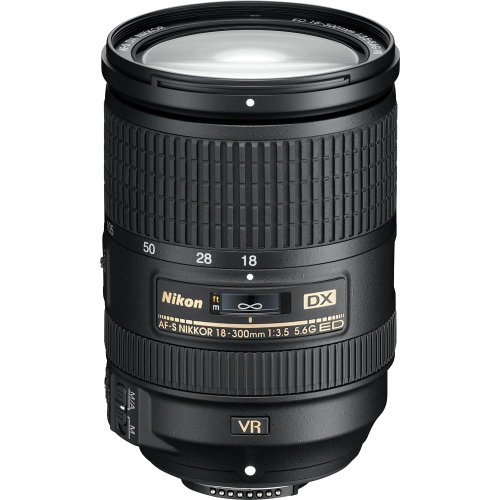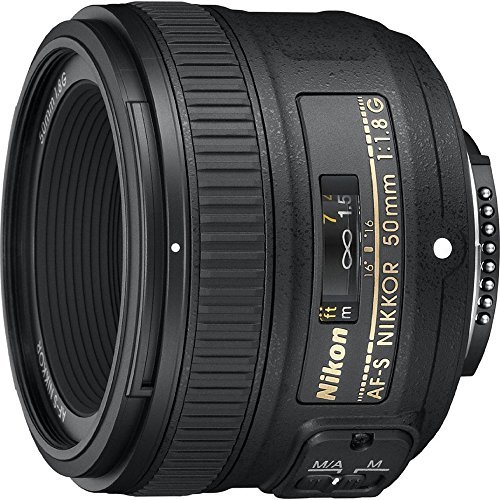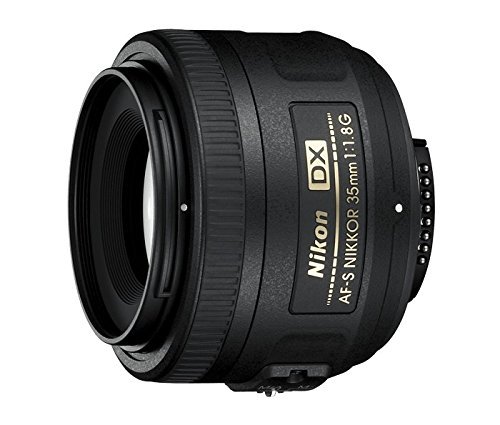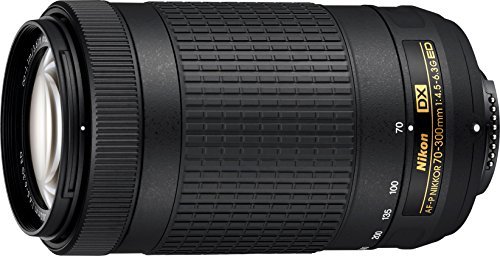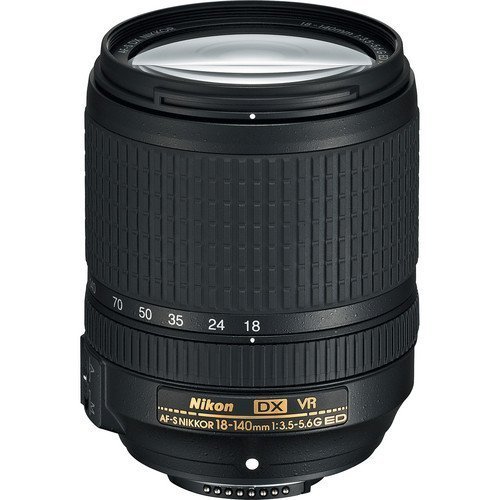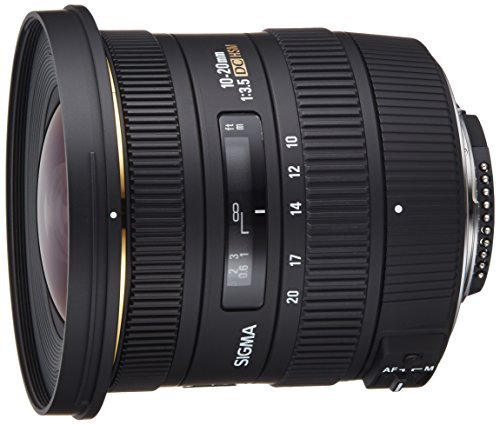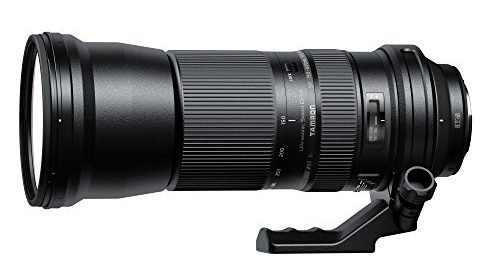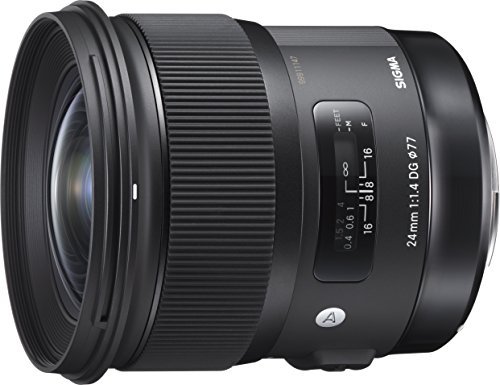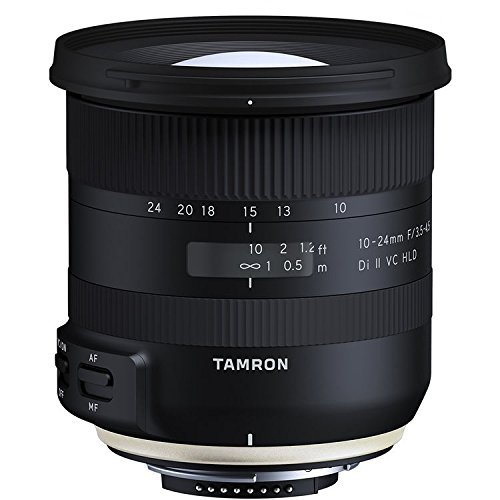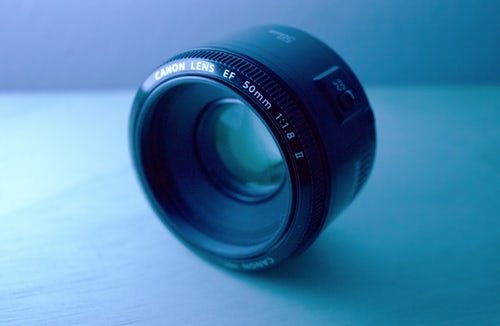In this article, we have reviewed the 10 best lenses for Nikon D5600 for different types of photography along with a comparison table to help you choose the best lens possible.
In this article, we have looked into some of the best lenses for Nikon D5600, with basic guidelines about their features, specifications, user guide and what is so special about them! The processes of seizing the moment have always been fascinating to human beings. From the ancient age to the modern era, the idea of preserving the moments, took place since we started etching images in the cave walls.
The stories that fascinated and enriched young minds for generations, the first act of human knowledge preservation have shaped into today’s art of photography. Art has its own language and it carries its own distinctive message, hidden in its shape, form, and format.
As the shadow falls in between the darkness and the light the act of capturing that has gone through several changes. Cameras are everywhere these days… Everywhere you look, like the eyes of surveillance, from mobile to CCTV, everywhere in every direction and commendable output, there are moments being captured.
The importance, therefore, hid in the quality and not in quantity. And when it comes to the quantity of captured images, Nikon and its lenses are certainly the best in the business.
Also, as I am going to disclose specifics about the best lenses for Nikon D5600, it is advised to the buyers to first know about the basics of the camera and then choose the lenses according to their needs.
Reasons for buying Nikon’s Camera and Lenses:
When it comes to buying digital cameras or lenses, there are two prominent brands that stand on top. Like the rivalry of Messi and Ronaldo, Nikon and Canon have been fighting for the title since the last decade.
Both of them produce Excellent DSLR cameras and lenses that provide exquisite image quality, a beautiful representation of color and light and both of them share some similar features and qualities along with the price range.
As the similarities are in abundance, some people don’t bother with proper assimilation of them, thinking either of them is going to be fine. However, both have their own distinctive qualities and own pros and cons.
But there is one thing that is as clear as the daylight. Being more of a global company, Canon makes various other electronic gadgets like cameras, printers, video types of equipment, binoculars, calculators, and many more. Whereas Nikon is solely dedicated to their business and came into the market with the sole purpose of serving the photography industry.
This tells us about the business approach and methods and how Nikon has always been keener on their buyer’s opinions and brought several upgrades in their models.
Advantages of Nikon Cameras and Lenses
Over the past few years the fact came out as a truth universally acknowledged that when it comes to capturing low-light images, Nikon’s abilities are incomparable. This is mostly because Nikon’s cameras have more AF points than any other camera and you will feel it when you’ll grip it for the first time.
The higher number of AF points provide a better focus for the cameras and lenses and the focus doesn’t shift away from where you don’t want them to. It has excellent flash control along with a large image sensor.
Even with a smaller number of pixels, Nikon provides a more accurate picture. This is aptly noted in all the models of Nikon and also in the D5000 series. Nikon is also more users friendly and has a very catchy and cool finish to it.
The Best Nikon D5600 Lenses in the Market
Nikon first introduced the Nikon D5600 in the US market as their D5000 series turned out to be a grand success and was in high demand. Here, in this post, some of the best lenses for Nikon D5600 have been handpicked and they will definitely purge out the best of your works.
Whether you are a voyager or a lone wolf carrying out projects in solitude, these lenses will definitely match your requirements and will fill you with immense joy.
Photography is the art of capturing images. It is the art of application and practice to create a durable image using scientific techniques. Good photography needs proper lighting, tools, and techniques. It doesn’t just capture images of nature or of any subjects. It’s about how you’re looking at your objects.
Whatever image is being taken, it is always objective to the photographer. Nature, human beings, animals, or other objects everything is objective in the eyes of the photographer. It is said that “beauty lies in the eyes of the beholder”.
Similarly, the photographer needs to find out the beauty inside the object he/she is picking. Electromagnetic radiation is used for photography along with an image sensor which is an electric means. These things support building good photography.
Along with its usage in art, film, or video production, photography is also used in science, business, and manufacturing for indirect use. Also, people capture images for their hobby or passion and mass communication.
Best lenses for Nikon D5600 you can buy
For more of a professional approach, we have brought you several lenses that will be beneficial for you. If you get for example an 18-55 mm or 18-140 mm kit lens then the idea of getting something even better might cross your mind.
So we have brought you a whole group of products perfectly capable of catering to all of your needs.
1. Nikon AF-S DX NIKKOR 18-300mm f/3.5-6.3G ED VR Zoom Lens
This camera lens is one of the best lenses for the Nikon D5600. Its aperture range is from f/3.5 to f/22 and the angle view is from 76 degrees to 5 degrees 20inch. It works with a maximum magnification of 0.32X and a minimum focusing distance of 1.6’.
The lens is constructed of 16 elements which are divided into 12 groups. It works in FX-format cameras in DX crop mode.
This lens provides excellent quality of the picture. This beautiful nature is filled with outstanding views, and those moments can be beautifully captured by this lens, the outstanding all-in-one photo zoom AF-S NIKKOR 18-300mm f/3.5-6.3G ED VR. For a 16.7X zoom lens, it is surprisingly lightweight. It is a Nikon DX-format D-SLR is a highly versatile second lens.
The AF-S DX NIKKOR 80-300mm f/3.5-6.3 ED VR can capture wide-angle scenic photos and group photos to slightly blurred background portrait pictures and super-telephoto posters. This lens is optimized for taking still pictures as well as HD videos.
Also, it has a special vibration reduction technology which helps in taking pictures even when your hands are shaky. Being a NIKKOR it features some of the best optics. If you’re the kind of photographer who finds versatility everywhere and takes inspiration from it, this lens would be great for you.
The AF-S DX NIKKOR 18-300mm f/3.5-6.3G ED VR is great for pictures taken in Zoom. Be it portrait photography or still or a photo that has a blurred background, pictures of nature, landscape, or décor, this lens is amazing in every aspect.
The massive zoom range goes from 27mm to 35mm all the way to super-telephoto 450mm equivalent in 35mm for which you can capture an athlete or performer or a wide scenic beauty. It is compact and balanced and its vibration reduction technology helps in taking sharp pictures and the camera’s fast autofocused system helps in taking videos by minimizing the camera noise.
While shooting at super-telephoto distances it’s common if a hand gets shaky. And a little shaking can ruin the whole photo. But this lens will help in taking pictures without shaking your hand.
That means its vibration reduction technology helps in preventing shake-free pictures. Also, VR is a huge advantage in capturing the low-light situation by slowing down the shutter speed without compromising sharpness.
This lens delivers stunning image quality with vibrator color, smart detail, and mild distortion. To improve the super optical focus and increase its versatility the lens uses silent motor wave technology which is ultra-fast.
Near silent autofocusing three aspherical and extra-low dispersion of glass elements for maximum contrast and minimum flare ghosting. It also provides a rounded 7-blade diaphragm for beautiful and natural background and internal focus for a more compact design.
- It can click close-up pictures quite well
- Helps in reducing hand shakiness.
- Uses vibration reduction technology
- It creates a good blurry background for portrait photography.
- It can capture good videos as well
- Picture quality suffers in some ranges.
- 18-200 moves very freely, and nicely. 200-300 meets some opposition and stiffness.
2. Nikon AF-S FX NIKKOR 50mm f/1.8G Lens
This lens will absolutely surprise you with its quality. It is good for everyday use and standard portraits. Its 50mm focal length (75mm equivalent to DX-format cameras) with a fast f/1.8 aperture allows clicking shallow depth of feet letting your subjects stand out from a distance on their backgrounds.
This lens is a lightweight standard lens and it’s great for traveling. During traveling one never knows when a bright sunny day will turn into a dull rainy gloomy day. With its fast f/1.8 aperture, the lens will be able to capture lowlight pictures with stunning brilliance.
For its wider aperture settings, the lens can create a beautiful natural background for pictures be it portrait or food or nature. Even if doesn’t even matter if the picture is being taken indoors or outdoors.
The light color efficiency is enhanced by Nikon’s super-integrated coating and it also offers superior color consistency and flare. The AF-S NIKKOR 50mm f/1.8G’s aspherical lens element eliminates coma and other abrasions while shooting at the widest aperture.
It also has silent wave motor technology for fast accurate and sharp autofocus with which sharp pictures are guaranteed.
This NIKKOR lens has a smart focusing mode which allows it to switch the focus from automatic to manual. You just have to simply turn on the focus ring on the lens with no lag time. This makes it possible to seamlessly change the manual settings by looking into the viewfinder.
- Fast upgraded f/1.8, compact FX-format lens. The picture angle with 35 mm (135) format is 47 degrees and the maximum reproduction ratio is 0.15X.
- Focal Length 50 mm, Minimum Focus Distance 1.48 ft.(0.45 m)
- Newly developed optical system with Aspherical lens element, Exclusive Nikon Silent Wave Motor.
- The lens is not zoomable.
3. Nikon AF-S DX NIKKOR 35mm f/1.8G Lens
This compact lightweight AF-S NIKKOR 35mm f/1.8G is optimized for DX-format cameras. It delivers constantly fine stunning images that one would expect from a prime camera. This f/1.8 lens is best for low-light situations and blurred-out backgrounds.
That’s why it can click good portrait pictures. It has a classic normal-angle view which makes it an all-around lens.
The AF-S Nikkor 35mm F1.8G DX is a lens that certainly caused a degree of dismay on its release, with many Nikon fans disappointed by the decision to make it compatible with the DX format only.
However, the main benefit of that decision is plain for all to see – even at its introductory price the lens costs rather less than the venerable AF-Nikkor 35mm F2.0D, despite the addition of an AF-S motor to allow autofocusing on Nikon’s entry-level D40 / D40X / D60 bodies.
It’s also less than half the price of the few other DX-format standard primes currently on the market (such as the Pentax 35mm F2.8 Macro, Tokina 35mm F2.8 Macro, and Sigma 30mm F1.4 EX DC HSM).
Within this context, the lens’s performance is very impressive. It produces finely detailed images at all apertures (although with somewhat low contrast wide open), focuses quickly and accurately, and handles well in a small, light package.
In particular, it’s much sharper than typical DX standard zooms such as the Nikon AF-S 18-55mm F3.5-5.6 DX VR or Nikon AF-S 18-200mm F3.5-5.6 DX VR.
The fast maximum aperture allows pictures to be taken hand-held in low light levels while maintaining relatively fast shutter speeds to avoid blur from subject motion (a key advantage over image-stabilized, but slow, kit zooms when photographing people without flash indoors).
The slightly less tangible aspects of image quality – such as resistance to flare, and the rendition of out-of-focus regions of the frame – are also dealt with nicely.
If the lens has one major flaw, it is a certain propensity to show chromatic aberration, of both the literal kind (which can be corrected by the in-camera JPEG processing of the D90 and D300) and the longitudinal (which cannot).
To be fair the latter is pretty well unavoidable with a fast prime, but the 35mm F1.8G DX suffers from it to a rather high degree, and in particular, can give some unpleasant purple fringing effects if you’re not careful.
Overall, though, it seems almost churlish to complain about these flaws in a lens so inexpensive, which gives otherwise such fine results. It’s good to see Nikon finally addressing the lack of purpose-designed, inexpensive fast primes for DX-format DSLRs and we hope they – and other companies – continue with this trend.
As it is the 35mm F1.8G DX is, for its winning combination of high image quality, large maximum aperture, and low price, a lens which deserves to be on many a Nikon shooter’s shopping list.
- It can create beautiful background blurring pictures. It isolates the subject for a dramatic effect
- Provides outstanding lowlight effects
- Cost-effective
- Ideal for discrete snapshots and landscape shooting.
- Not zoomable.
- Has some barrel distortion.
4. Nikon AF-P DX NIKKOR 70-300mm f/4.5-6.3G ED VR
This exceptional super-telephoto zoom lens has vibration reduction e which provides excellent quality pictures with blur-free results. This is specially optimized for DX-format DSLRs. The AF-P DX NIKKOR 70-300mm f/4.5-6.3G ED VR picks up where the 18-55mm lens leaves off to bring distant action within reach
Not only does it have superb optics and telephoto field of view product which can create a good blurry background portrait picture, but it also can get closer to the subject of the photo.
That is why this lens is great for capturing pictures of sports, concert performers, and beautiful landscapes, and one of the best lenses for the Nikon D5600. In a handheld position, this lens is capable of recording a video if VR image stabilization and a quiet autofocus motor are added.
The AF-P DX NIKKOR 70-300mm f/4.5-6.3G ED VR is a phenomenal second lens which is one of the best lenses for the Nikon D5600. It is used on Nikon’s high-end lenses. It makes the photos rich, vibration, and colorful with minimum distortion and soft background.
Nikon’s Vibration Reduction (VR) image stabilization keeps photos sharp and videos steady when shooting handheld. It also enhances your camera’s low-light capabilities, allowing you to shoot at slower shutter speeds in dim lighting.
Switch between Auto Focus and Manual Focus or turn VR on and off using the camera menu. With no switches on the lens barrel, you have no chance of accidentally changing settings when you want to take the shot.
This lens uses a plus motor that focuses smartly and silently. It brings the subject with absolute precision. That’s why it shifts focus from one subject to another very precisely.
- Creates beautiful close-up pictures
- Has precision on subjects and focuses quickly.
- It has vibration-reduction technology
- Exceptional telephoto zoom clicks a good picture
- Chromatic aberration
- Vignetting.
5. Nikon AF-S DX NIKKOR 18-140mm f/3.5-5.6G ED
This outstanding grab-and-go kind of lens will keep your camera ready for nearly every situation. This AF-S NIKKOR 18-140mm lens is optimized for drawing full potential from Nikon’s high-resolution DX-format image sensor.
It delivers beautifully soft blurred background landscape pictures and sharp photos and videos. The versatile 7.8x zoom range can take a wide-angled family portrait and close-up sports pictures in the field.
It has 4 stops for VR stabilization which helps in shooting in a handheld position and creates a sharper image. The macro-style shot feature allows the camera to capture 1.48mm of the subject.
It can be zoomed in for 140mm to take close pictures. In between, it has a standard view which is similar to what is seen with open eyes and medium telephoto views which is ideal for portrait photography.
In order for VR image stabilization, this lens’s Extra-low Dispersion (ED) glass helps in eliminating reflection and lens flare for better contrast. It also has an aspherical lens which minimizes aberration and improves image integrity and color.
It has got the advantage of recording video as the silent wave motor provides ultra-fast and ultra-quiet autofocusing.
- Goes from wide-angle to telephoto for great snapshots or videos.
- Silent wave motor enables fast accurate and quiet autofocus
- Good for videography
- Can handle lowlight situations and telephoto
- ED glass minimizes chromatic aberration and aspherical lens elements virtually eliminated coma.
- Highly-priced.
6. Sigma 10-20mm f/3.5
This is best for photojournalists or photographers and architects as it is a wide-range lens that is capable of a relatively low-depth field. It can create an excellent job of accentuating the relationship between the photographer and the environment.
It has the ability to work in the dark due to 10-20mm. But this does not suffer from characteristic softness issues like other Sigma lenses.
The longer focal length provided by this lens may relegate you to any serious work. The 10 mm focal distance gives the subject a distorted and carnivalesque appearance.
Though some users regard it as silly, you will feel less practical applications as you will continue to lower your focal length. This lens suffers from many of the issues suffered by other lenses. Especially the vignetting issue is the most common of them.
The image age tends to be a bit soft but this can work to your advantage. The chromatic aberration problem and sun flare make the 10-20mm difficult to work with.
Still, it is good for someone who wants to capture the entire scene of a particular subject in a single image.
- Perfect for photojournalists or photographers
- Can perform in the dark
- Doesn’t suffer from characteristic issues like other Sigma lenses
- Due to chromatic aberration and sun flare it’s difficult to work with.
- Vignette issues
- Doesn’t work for a fuller-framed camera
7. Tamron 150-600mm f/5-6.3 zoom lens
This telephoto lens has a large range in focal length which allows you to photograph anything from an intimate portrait to a macro shot of a close-up look, for example, a close snap of an insect or a sportsperson’s move on a sports event.
The specialty of Tamron 150-600mm is its power to capture every little movement in perfect focus. It doesn’t sacrifice sharpness if the shot is taken from a distance.
Although for its huge size, it’s overly heavy and not easy to handle. But with great care, it’s possible to operate. The Tamron performs as well as its Nikon counterpart and does not require any adaptors to function properly with standard DSLRs.
Along with all this goodness, it has some shortcomings being a massive piece of equipment. It doesn’t work under low light situations and you have to pump up the ISO. But still, the result will be less than satisfactory.
The autofocus runs a bit slow and goes a bit soft at the maximum focal length. It’s delicate equipment so over time it collects dust and dirt particles.
Apart from all these dropbacks, this one is very durable and runs up to 6 years. And for those who really want to take close-up pictures but get nervous thinking about it, this equipment is best for them.
- Long-lasting
- Good for taking close-up shots
- Good for intimate portrait or macro shots
- Doesn’t have sharp autofocus. A picture can get blurred by little movement
- Can collect dirt and dust particles if not vigilant. It’s delicate equipment.
- Very heavy as it is big in size.
8. Sigma 24mm f/1.4 prime lens
This sturdy lens is everything that you need for a prime lens. It’s best for photographers on the go. It is so compact that it can fit into a small camera bag. But some users have claimed that even being tiny in size (than other camera lenses) it can be as heavy as a standard zoom lens.
There is a presence of minimal distortion but it is impossible to play down the image quality of this lens. The smooth, creamy bokeh makes it easy to achieve distracting background and gives the image a dreamy feeling which is very admirable.
In this particular model, you have to shoot in manual mode. The main complaint the users have given is that the issue with the autofocus function of the lens. It doesn’t work well in a low-light situation. You have to always check if the focus is on point.
Alternatively one can connect a laptop along with it for keeping the focus on a point and keeping the sharpness is an absolute must. But despite everything, this handy little lens is easy to handle.
- It is small in size
- Easy to carry in a small camera bag
- Provides a dreamy feeling to the image which makes it admirable
- Has an issue with the lens’s autofocus function
- Doesn’t work in low light or autofocus
- Although it’s small, it’s heavy
- Have to keep an eye on the vignetting issue.
9. Tamron 10-24mm f/3.5-4.5 Di II VC HLD
It is a major upgrade from Tamron’s original 10-24mm lens. This lens adds optical stabilization and a new autofocus system which is quicker as well as quieter. It improves handling as the focus ring no longer rotates during autofocus.
The weather seal and keep-clean fluorine coating on the front element is a sign of high build. The image quality is benefitted from sharpness and contrast along with well-contained distortion for an ultra-wide zoom lens. Color fringing is fairly normal.
- Good image quality and construction.
- Optical stabilizer
- Pricier than other competitors
- Electromagnetic compatibility.
10. Samyang 10mm f/2.8 ED AS NCS CS
Photographers are so used to autofocus lenses that manual setting lenses would sound unnatural and vague. The huge depth of field enabled by a lens with a soft focal length makes accurate measurement of the focal lens.
This lens’s distance scale enables us to try methods of landscape and street photography by setting the ‘zone focusing’. The nanostructure coating helps to reduce flaring and ghosting and the smart glass design help to take good-quality pictures.
- Good built quality
- Fast aperture rating
- No autofocus
- No optical stabilization.
Among all these lenses it does not have to be that you have to pick the best one that is a general choice. Everyone has their own choice and their own needs. You should choose the lenses according to your need or choice or budget.
There are lenses for the professional; also there are lenses for the beginners. Even for photographers and photojournalists, there is a separate kind of lens that would be good for your job. If seeing reviews you choose the best one but if you are a beginner, it cannot be the best choice for you.
The complicated ones can only be handled by professional photographers. That’s why the lenses are categorized to fit different types of users and different types of budgets.
If you’re a beginner and you choose the ones that are only the professionals’ cup of tea, then it’s a waste of money and resources. So, one should buy according to their limits of budget and requirements.
For example, the Tamron 150-600mm lens is best for close-up intimate snaps. It helps to get the close-up shot of a small insect or a sportsman in the field or a performer in a concert. If this is your requirement, then you should buy this lens.
If you’re a beginner, the Nikon AF-S FX NIKKOR 50mm f/1.8G lens would be good for you. It is easy to handle and this is one of those which helps to learn better.
Nikon 50mm f/1.8G is good for bloggers. It’s one of those kinds of camera lenses that is easy to handle and can be used on a day-to-day basis. Hence it is best for social media bloggers who need to use their cameras every day.
Budget is another factor when you’re buying lenses. Not everyone’s budget is the same. You have to keep in mind what budget suits your pocket. Because there are some other good lenses that are not that hyped as they don’t belong to the particular brands.
Hence, they are less hyped. But if you research a bit, you will see that these work just fine as that of the popular branded ones.

